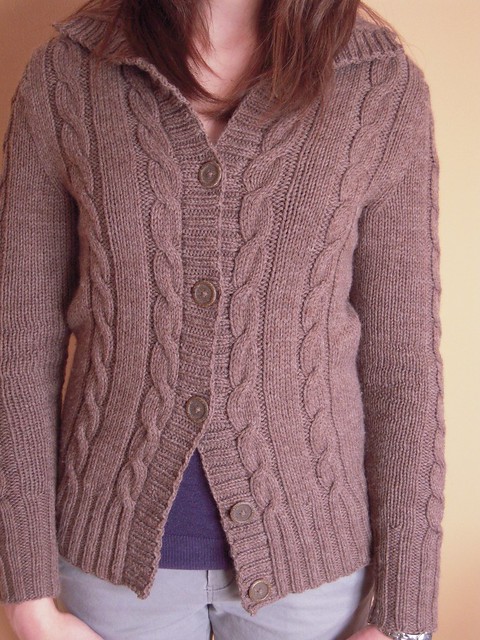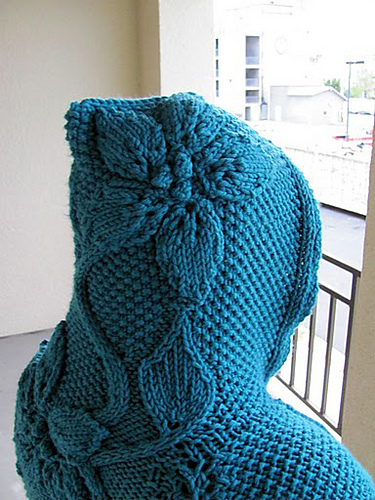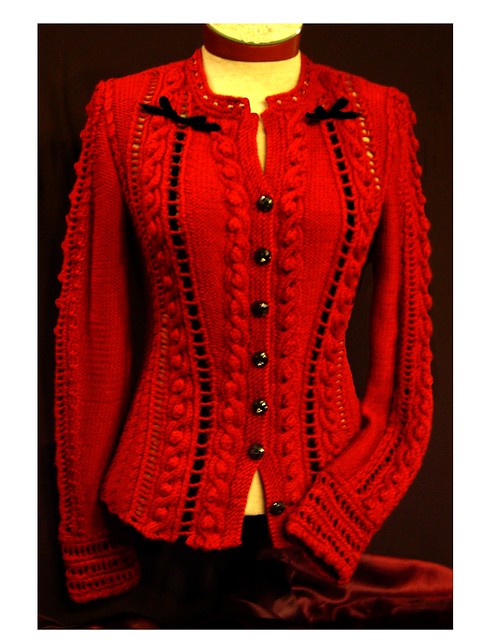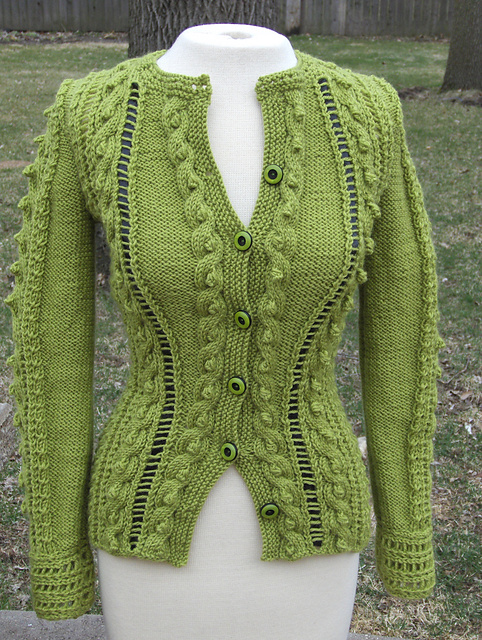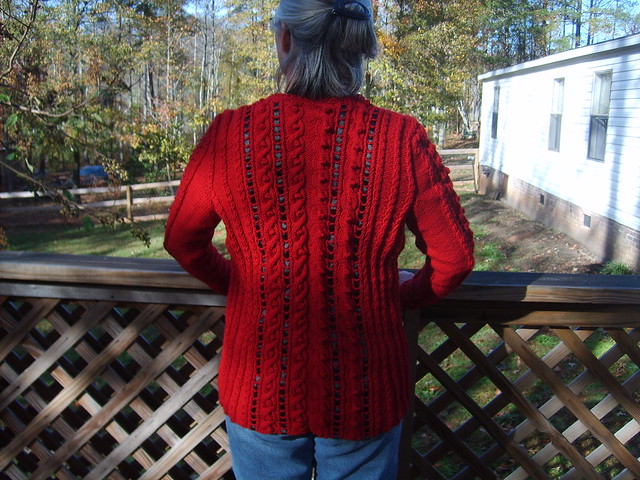Dear Yarnies,
So you have this great pattern. You’ve got the perfect yarn for it, and your gauge is spot on. You stitch it, either in crochet or knitting, exactly as it says. And yet, it doesn’t fit the way you want it to when you’re done. You look at the model and you realize that well, she’s a bit more endowed than you in the bust, and a bit less gifted in the hips. It occurs to you that MIGHT be the reason why the darn thing rides up in the hips and bags around your armpits.
Well, I’m here to tell you something.
That can be avoided. Remember how I was talking to you about Gauge? Well, your gauge can really help you when working on that sweater.
You see, your gauge tells you how many stitches you get per inch. Think of it as a ratio. (I know, we’re getting back to some math from long ago, but bear with me). Say you get 10 stitches in an inch. You have a sweater pattern that has you knitting 30 inches around your bust, so you should have 300 stitches around your bust. But your waist is only 25 inches around. that means going from your bust to your waist you have to somehow decrease to 250 stitches.
You could do those decreases gradually, or you could do them all at once. (Most people choose to do them gradually, or it would cause ripples in your knitting. But if you want ripples, do those decreases all at once.)
Then, your hips are 35 inches around. So from your waist to your hips you need to increase 100 stitches.
In it’s most simple form, that is what shaping is. Now, you can get complicated by then figuring out that in between your bust and your waist you have 5inches, and you need to decrease 50 stitches. So you can figure that each inch your decreasing 10 stitches. You get 5 rows to the inch, so each row your decreasing by 2 stitches.
Do the same type of math for your waist to your hips.
The same thing would work for crochet.
So, Yarnies, make your gauge work for you, so you can have stunning pieces of work to show me!
Until later,
Jen


